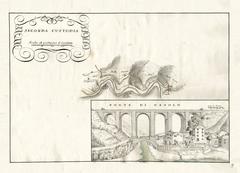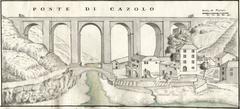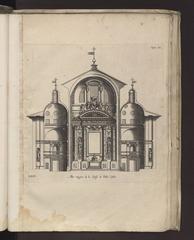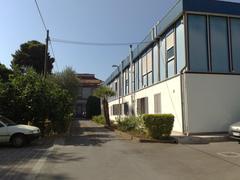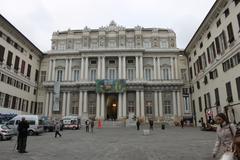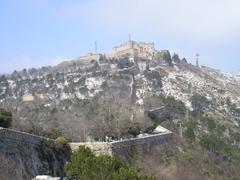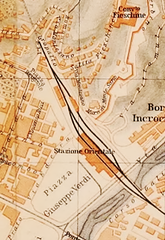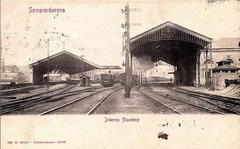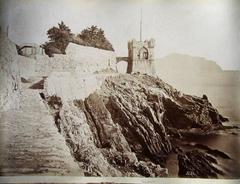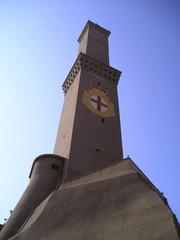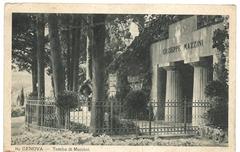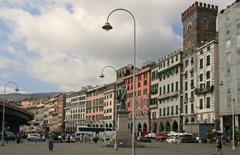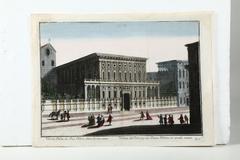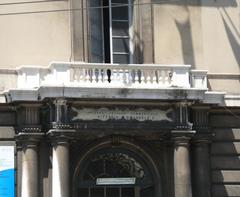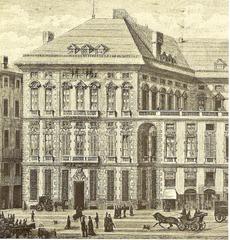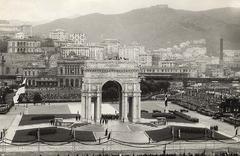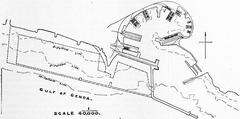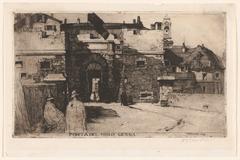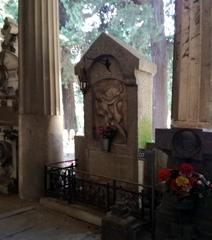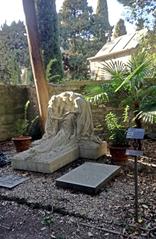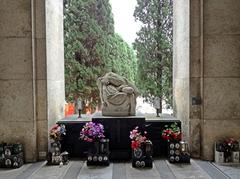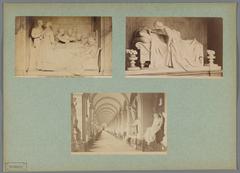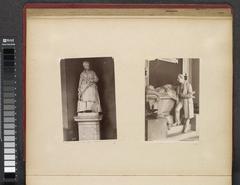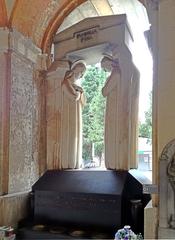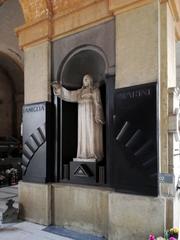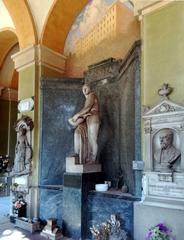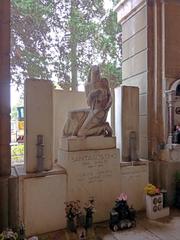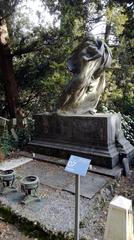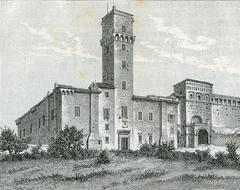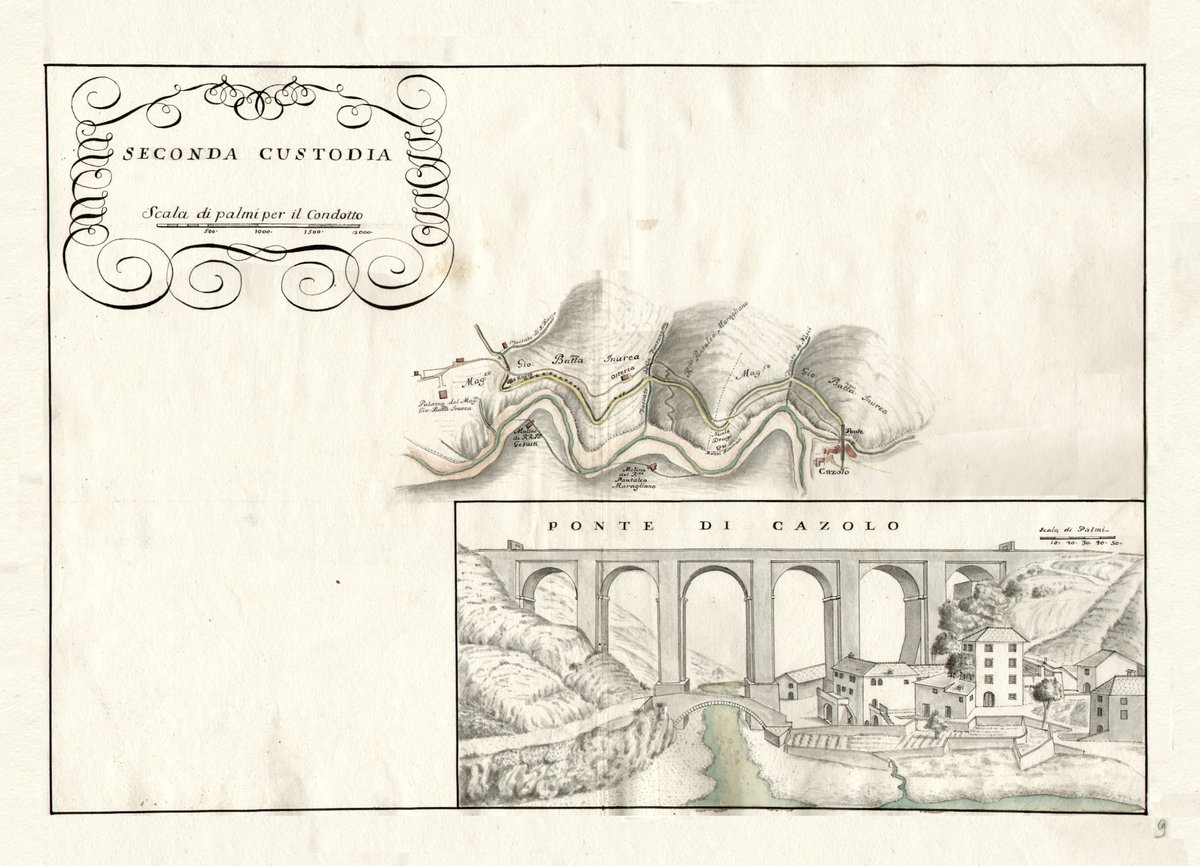
Comprehensive Guide to Visiting the Historical Aqueduct of Genoa
Date: 17/08/2024
Introduction
The Historical Aqueduct of Genoa, or Acquedotto Storico di Genova, stands as a remarkable testament to the ingenuity and resilience of medieval engineering. Constructed in the early 1200s, this aqueduct was crucial in channeling water from the high valleys to the bustling city of Genoa, supporting its growth as a major maritime power (visitgenoa.it). Over the centuries, the aqueduct underwent numerous enhancements, including the construction of grand stone bridges and viaducts, such as the impressive Ponte Canale sul Rio Torbido, reflecting the evolving technological advancements of the time (bimbeinviaggio.com). Today, the aqueduct is not only a symbol of Genoa’s rich heritage but also a popular destination for historians, engineers, and tourists alike, offering well-marked trails and informative signage that provide insights into its historical and architectural significance (viaggiapiccoli.com). This comprehensive guide aims to equip potential visitors with essential information on visiting hours, ticket prices, travel tips, and more, ensuring a memorable and enriching experience at this iconic monument.
Table of Contents
- Introduction
- Historical Background of the Historical Aqueduct of Genoa
- Visitor Experience
- Nearby Attractions
- Special Events and Photographic Spots
- Practical Tips for Visitors
- Frequently Asked Questions (FAQ)
- Conclusion
Historical Background of the Historical Aqueduct of Genoa
Origins and Construction
The Historical Aqueduct of Genoa, known as the Acquedotto Storico di Genova, is a remarkable feat of medieval engineering that dates back to the early 1200s. Initially constructed to supply water to the burgeoning city of Genoa, the aqueduct’s primary purpose was to channel water from the high valleys to the city and its port, ensuring a steady and reliable water supply. This was crucial for the city’s development, supporting both its population and its maritime activities (visitgenoa.it).
Expansion and Enhancements
Over the centuries, the aqueduct underwent several expansions and enhancements to meet the growing demands of Genoa’s population. Significant improvements during the 1600s included the construction of grand stone bridges and viaducts to traverse the challenging terrain of the Bisagno Valley. These enhancements were crucial in maintaining the aqueduct’s functionality and efficiency. Notable structures from this period include the Ponte Canale sul Rio Torbido, a bridge spanning over 100 meters in length and standing over 35 meters high, exemplifying the engineering prowess of the time (bimbeinviaggio.com).
Architectural Features
The aqueduct is renowned for its impressive architectural features, including stone bridges, tunnels, and viaducts. One of the most significant structures along the aqueduct’s route is the siphon bridge over the Geirato river in Molassana, constructed in 1777. This bridge, with its 14 arches stretching over 640 meters, was a masterpiece of hydraulic engineering in its day (visitgenoa.it). These architectural marvels not only served a practical purpose but also symbolized Genoa’s ingenuity and resilience over the centuries.
Historical Significance
The Acquedotto Storico di Genova played a vital role in the city’s development and prosperity. By ensuring a consistent water supply, the aqueduct supported population growth, industrial activities, and maritime operations. Its significance extends beyond its practical utility; it symbolizes Genoa’s historical and cultural heritage, reflecting the city’s ability to adapt and thrive through the ages (viaggiapiccoli.com).
Decline and Preservation
The aqueduct was in operation until the middle of the 19th century, but the water continued to reach the neighborhood of the Old Port as late as 1951. With the growth of the city, part of the 40-kilometer length of the aqueduct has disappeared. However, several long, level stretches remain that can now be traveled on foot or by bike, amid the homes and gardens of the old villages of the Bisagno valley (visitgenoa.it).
Cultural Impact
The Acquedotto Storico di Genova is not just an engineering marvel but also a cultural icon. It has inspired numerous local legends and stories, reflecting its deep-rooted significance in Genoese culture. Its presence reminds us of the city’s historical journey and its ability to adapt and thrive through the ages (viaggiapiccoli.com).
Visitor Experience
Visiting Hours and Ticket Prices
Visitors to the Historical Aqueduct of Genoa should check the official visitgenoa.it website for the most up-to-date information on visiting hours and ticket prices. Admission is typically free, though guided tours and special events may have associated costs.
Guided Tours
Opting for a guided tour can provide a deeper understanding of the aqueduct’s history and significance. Local guides often share valuable insights and anecdotes, making the visit more enriching.
Trail Navigation
The aqueduct’s well-marked trails and informative signage make navigation straightforward. Downloadable guides and GPS tracks are also available to assist visitors in exploring the site (visitgenoa.it).
Safety
While the aqueduct is generally safe to visit, some sections may be less well-maintained. Pay attention to signage and avoid areas that are marked as restricted or under repair. Always stay on designated paths to protect both yourself and the historical site.
Nearby Amenities
There are picnic tables and a small children’s park with a swing, slide, and drinking fountain at the start of the path, making it a family-friendly destination (bimbeinviaggio.com).
Nearby Attractions
Small Lakes of the Cicala Stream
To enhance your visit, consider exploring nearby attractions such as the small lakes of the Cicala stream, which can be reached via a quick and easy walk with minimal height difference. The path along the aqueduct offers a pleasant and scenic route, perfect for a leisurely hike or bike ride (bimbeinviaggio.com).
Special Events and Photographic Spots
The aqueduct often hosts special events, such as guided night tours and historical reenactments, which provide a unique way to experience its history. Photographers will find numerous picturesque spots along the route, with the stone bridges and viaducts offering stunning backdrops.
Practical Tips for Visitors
- Best Time to Visit: The best time to visit is during the spring and autumn months when the weather is mild, and the landscape is lush and green.
- What to Wear: Comfortable walking shoes are essential, as some sections of the aqueduct trail can be uneven and rocky. Depending on the season, bring a hat, sunscreen, and plenty of water. In cooler months, a light jacket or sweater is advisable.
- Nearby Amenities: There are picnic tables and a small children’s park with a swing, slide, and drinking fountain at the start of the path (bimbeinviaggio.com).
Frequently Asked Questions (FAQ)
- What are the visiting hours for the Historical Aqueduct of Genoa? Visiting hours can vary, so it is best to check the official visitgenoa.it website for the most up-to-date information.
- How much do tickets cost to visit the Historical Aqueduct of Genoa? Admission is typically free, but guided tours or special events may have associated costs. Check the official visitgenoa.it website for details.
- What are some nearby attractions to the Historical Aqueduct of Genoa? Nearby attractions include the small lakes of the Cicala stream and various scenic hiking and biking trails along the aqueduct.
- Are there any special events held at the aqueduct? Yes, the aqueduct hosts various special events such as guided night tours and historical reenactments. Check the official website for event schedules.
Conclusion
The Historical Aqueduct of Genoa is a true marvel of medieval engineering, reflecting the ingenuity and resourcefulness of the Genoese society. Its construction and subsequent enhancements played a pivotal role in the city’s development, providing a reliable water supply that supported population growth, industrial activities, and maritime operations. Today, the aqueduct stands as a protected heritage site, attracting visitors from around the world who come to explore its architectural features and historical significance (visitgenoa.it). By following practical tips and utilizing available resources such as guided tours and downloadable guides, visitors can gain a deeper appreciation for this engineering feat and its enduring legacy. Whether it’s walking along the ancient waterway, attending special events, or capturing stunning views of Genoa’s landscape, the Historical Aqueduct of Genoa offers a unique and enriching experience that highlights the city’s historical journey and its ability to adapt and thrive through the ages (bimbeinviaggio.com). For more updates and detailed information, visitors are encouraged to check the official visitgenoa.it website and related resources.
